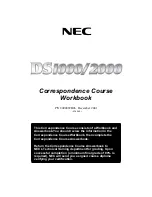
cabinet sidewall, depending on where supply tank is to be
located. Generally the unit is installed at the front of the
cabinet and the tank at the rear.
To mount the unit, elevate it at least 2” off the floor, level
it and mark the location of mounting holes needed. Drill
hole for mounting screws and install screws allowing the
mounting bracket slots to slip over them.
Note:
If the cabinet sidewalls are not solid, unit may sit
on the floor with screws used just to keep it against the
cabinet in a vertical position.
8. Pre-fill, Sanitizing and
Supply Tank Placement
Pre-filling the storage tank is always recommended so
there is sufficient pressure to check for leaks and sufficient
water to flush the carbon post filter. To do this connect the
feed line that will serve the RO unit and connect it directly
to the bladder tank. Allow the water to fill the bladder until
it stops. Then close to tank valve and let this stand for 15
minutes. Remove the tube and connect to inlet fitting of the
RO unit.
The supply tank should be placed under the counter or
within 10 feet of the RO unit.
Note:
Tanks are pre-pressurized with air at 7 psi.
9. Final Tubing Connections
With all components in place, complete final tubing
connections with these guidelines:
1. Tubing should follow contour of the cabinets.
2. Cut tubing to correct length using square cuts and a
proper cutting tool
3. Make sure there are no crimps in the tubing.
4. Keep tubing from the RO unit to the tank and faucet as
short as possible for good flow.
5. The Drain line is a short ¼” tube connected to the
membrane housing. On this tube is a 3” cylindrical
drain flow restrictor. This is where the drain line
connects to the RO unit. Do not remove the drain flow
restrictor as this will cause a failure in the system.
Icemaker hookup (optional and requires a T fitting and
additional shut-off valve not supplied with RO unit)
The RO unit can be connected to any standard refrigerator
icemaker or ice maker/water dispenser.
(Do not connect to a commercial type bar icemaker)
To complete this operation, connect a T with a shut
off valve into the faucet tubing and route tubing to the
refrigerator. (Hooking up to existing copper tubing is not
recommended due to possible corrosion) Turn off icemaker
inside freezer prior to turning off the existing tap water
supply line to the refrigerator. Turn on the icemaker after
the RO system has been drained several times and the
tank has a full supply of water.
Icemaker lines are often run in the rafters of unfinished
basements or finished basements with drop ceilings and
then up to the fridge. If the basement has a hard ceiling,
this won’t be an option and the line would have to be run
through cabinets. In cases where a basement or cabinets
connecting sink and fridge are not available, icemaker
connections cannot be made.
Note:
Before any service is performed on the RO system,
turn off icemaker valve and icemaker unit. Turn back on
only after RO system has been sanitized and flushed out.
System Start-up
Prior to start-up:
1. Check all fitting connections.
2. Open self-piercing valve, allow system to pressurize
and check for leaks.
3. Open valve on bladder tank and open faucet until
water flows.
4. Close faucet, wait five minutes and check for leaks.
5. Allow system to produce a full tank of RO water. (2-3
hours)
Flushing System and Checking Operation
1. Flip the faucet lever up and this will keep faucet on. Do
this and allow tank to completely drain of all water.
! Do not use this water !
2. Close faucet and re-inspect system for leaks.
3. Allow system to produce water for 4 hours, at this point
the bladder tank will be full.
4. Open faucet again and allow tank to empty for a
second time.
! Do not use this water !
5. Close faucet and allow unit to produce another tank of
water.
6. At this point supply line to ice maker connection
(optional) may be opened and RO water is ready to be
consumed.
Replacing Filters & Sanitizing The System
Each year the filters in the system should be replaced.
Usually the membrane can be replaced every other year,
but the prefilters and post-filter should be changed annually
and in some cases more often.
Filter Replacement
1. Turn off valve on RO bladder tank.
2. Turn off feed water pressure.
3. Open RO faucet to relief pressure.
4. Using the supplied housing wrench remove the filter
Содержание USRO4-60-QC
Страница 9: ......



























